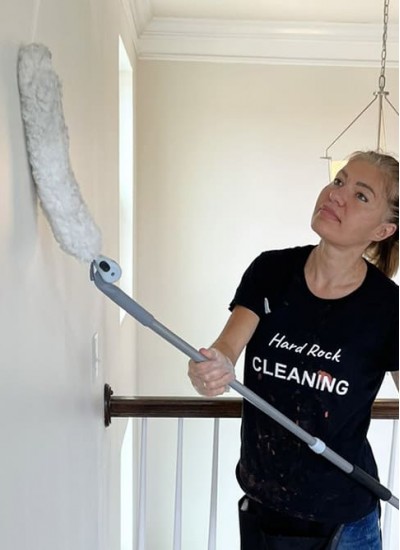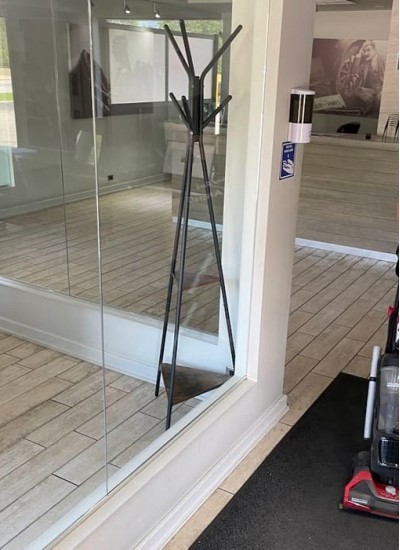
How to Clean Painted Walls
According to a wise man, an amateur needs methods, but a professional needs principles on which these methods are based. Based on general principles, they develop their own techniques. That's why we don't disclose specific names of cleaning chemicals, manufacturing companies and detailed techniques. First, this would take up too much space. Second, it would be advertising. Third, we could be accused of being one-sided or biased because various products, equipment and techniques can be used for the same purposes.
Diversity of Paints and Coatings
The diversity and scope of application of paints and coatings are immense. They are classified by the type of the primary binder into four groups, including numerous subgroups, in particular:
- polycondensation resins (epoxy, pentaphthalic, alkyd-urethane);
- polymerization resins (polyacrylate, alkyd-acrylic, polyvinyl acetate);
- natural resins (oil, bitumen, shellac);
- cellulose ethers (nitrocellulose, ethylcellulose).
The paints we are interested in are exterior and interior paints that are used to cover the walls of residential and commercial buildings so that the cleaning companies can keep them in presentable condition later on. Each type of paint has its own advantages and shortcomings, determining the peculiarities of maintenance.
The so-called flock coatings can only conditionally be called a paint. It is rather a decorative plaster made of acrylic flakes called “chips”. For cleaning professionals, such objects present a rather unpleasant challenge. Because of their heterogeneity and relief, such a coating is an excellent accumulator of dust. However, when using a vacuum cleaner, “chips” crumble, deteriorate under the influence of stain-removing reagents, and washing them is out of the question.
Detergent Compositions
The modern industry produces cleaning compositions for almost “every occasion”:
- grease (including solvent-free, oil-based degreasers);
- graffiti (special washes for different types of paints and surfaces);
- construction dirt (for example, if silicone cannot be removed mechanically, and conventional solvents damage the base, special removers can be helpful).
There are many options — both in terms of price and quality, and in terms of intended use. equivalents or fakes: not everything that is written on the original packaging can be trusted without reservations. But if a paint remover is produced by the producer of the paint, it is a different matter. Major manufacturers of paint products always have detergent, protective, water-repellent, antistatic and other specialized products in their product range.
A Few Guidelines
It is recommended to dry-clean the walls before washing them — with a vacuum cleaner, brush or mop. What for? There may be water-soluble, dust-like stains on the wall that would be very difficult to remove. Just imagine splashing small, invisible crystals of blue or potassium permanganate with water...
Occasionally, the customer may not even know what the wall was painted with. And you have to act based on your experience and intuition. If there are any doubts regarding the correctness of the detergent choice, trying its action on a small inconspicuous section of the wall is a win-win option. The majority of the painted surfaces are don’t take well to mechanical influences, organic solvents and temperatures above 50 ° C (heat-resistant enamels and bituminous varnishes do not count).
Speaking of the applicability of chemicals in certain cases. Hard Rock Cleaning specialists with many years of experience regularly undergo advance training, improving their skills and expanding professional horizons. This is necessary since the market is constantly flooded with new products and it becomes more and more difficult to navigate in.
After treatment, the surface should be rinsed with clean water and wiped dry. The reagents included in detergents can leave streaks on the coating after drying.
Cases are Different
What is the material painted? Wood, brick, concrete, plastic, wallpaper, bast mat — depending on the base, adhesion is different, therefore, the coating should also be handled differently. What is the way it is painted? Is it a single color wall? Or is it an art composition — a mural or portrait painted with different types of paint? What is the nature and type of contamination that needs to be removed? If you smear oil paint with nitro enamel, what can you do? By dissolving the enamel, the base will also be washed away.
There are many different cases - washing off grease deposits, removing lime scale, mold, soot, or graffiti. The so-called “post-construction” cleaning of houses and apartments after repairs is rich in unexpected surprises. Acidic preparations are needed to remove traces of cement, putty or caulk. Alkaline products are required to remove traces of dry oil or oil paint. As for traces of adhesive tape, solvents are needed. And that is why this question is always relevant: will the chemical affect the fresh paint on the wall?
Despite the seemingly uncomplicated nature of the task of cleaning painted walls, it requires trained personnel. Otherwise, it is possible to create a very serious problem from a small solvable one. And an unsolvable one.





